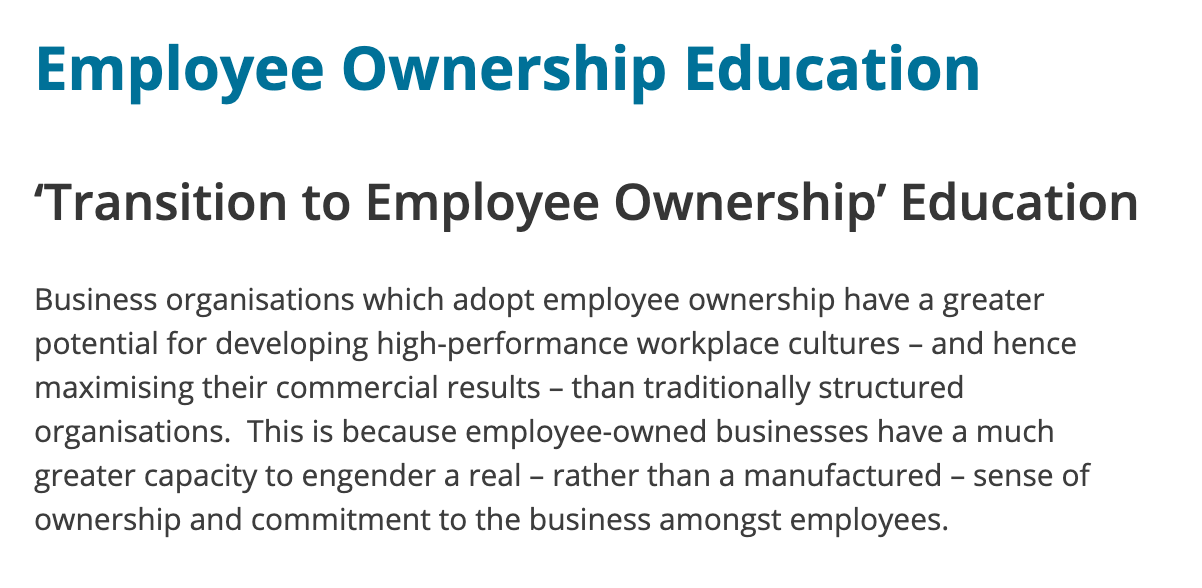‘Transition to Employee Ownership’ Education
Business organisations which adopt employee ownership have a greater potential for developing high-performance workplace cultures – and hence maximising their commercial results – than traditionally structured organisations. This is because employee-owned businesses have a much greater capacity to engender a real – rather than a manufactured – sense of ownership and commitment to the business amongst employees.
Given this capacity for a real sense of ownership and commitment, there will be a strong desire by ‘employee-owners’ to understand and develop the factors involved in ensuring a high-performance workplace culture within their organisation.
The three essential factors in support of a sustained high-performance workplace are:
- Organisational formation: Organisation policies, practices and the provision of needed resources (e.g. systems, tools) which enable (not hinder) the formation of high-performance workplace culture.
- Workplace formation: Workplace, shop-floor and team management policies and practices which enable (not hinder) the formation of high-performance workplace culture.
- Individual formation: Education and training programs which provide individuals with relevant knowledge and skills to develop and sustain their individual contributions to those organisational and cultural practices enabling high performance within their workplace.
For more on this subject, see our guide “Objectives, Principles and Topics for Employee Ownership Education and Training Programs”
Employee ownership works best where staff have an understanding of the ‘critical numbers’ for the success of the business. This is where participative management systems such as ‘Open book Management’ (OBM) come into play. For more on this approach, see our “Summary” of open-book management and the tasks involved. As well, ‘financial literacy’ training is often seen as essential for staff to track how the business the going. For more on that aspect – especially in conjunction with OBM – see The Fundamentals of Financial Literacy Training.
It is also important that staff being elected to positions in an employee-owned company’s governance structure are trained in their role and duties. In this regard, the Governance Institute of Australia’s “Duties of Officers and Directors – Short Course” – which is popular with staff in EOTs in Australia – would be essential for anybody considering becoming an ‘employee director’ of a business. You can see the full course description and ‘training manual for this course here.
In summary, beyond the formal requirements prescribed in the EOT constitutions/legal structures to facilitate employee representation and employee engagement/voice – including those mechanisms which support employee participation such as employee councils/forums – creating an ownership culture involves a further four key elements:
- Providing ownership education that teaches employees how the business makes money and their role in making that happen.
- Sharing performance data about how the business is doing overall and how each employee/workgroup contributes to that.
- Training people in business/financial literacy so that they understand the numbers being shared.
- Sharing profits through formalised profit-sharing plans which provide for a meaningful ‘stake in the business and which can become an important part of an employee’s financial security.
Building employee involvement is not just about allowing employees to contribute ideas and information. It is about making this a part of their everyday work through teams, feedback opportunities, devolution of authority, and the formal EOT ‘employee representation’ structures.
For more on employee ownership culture, this short video produced by the US National Centre for Employee Ownership a couple of years ago is really good – see: Culture and Communication at Employee-Owned Companies
See also our “Employee Ownership Trusts” web page.

